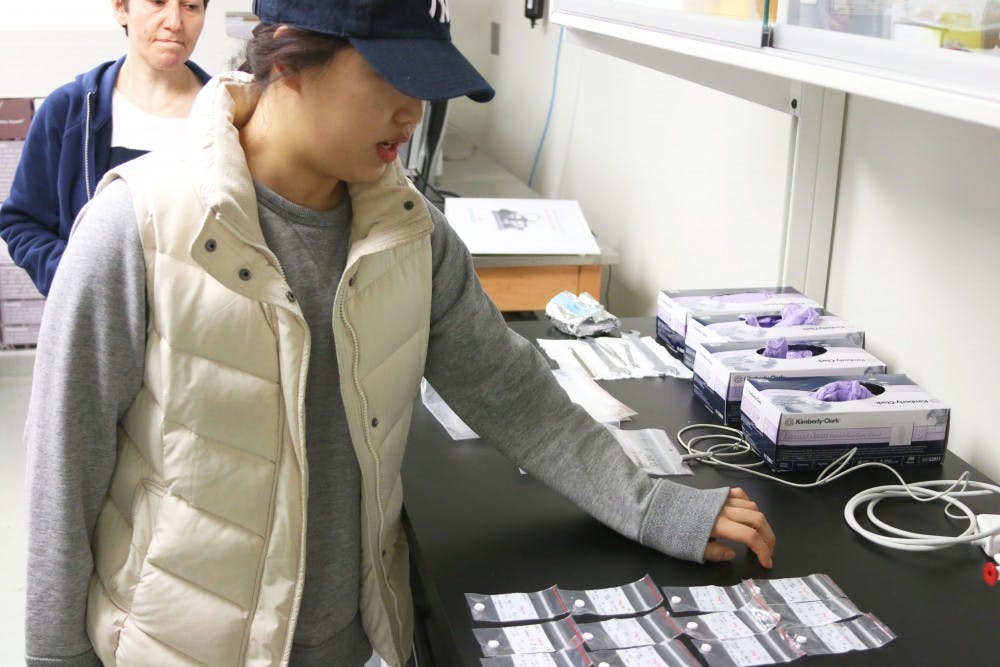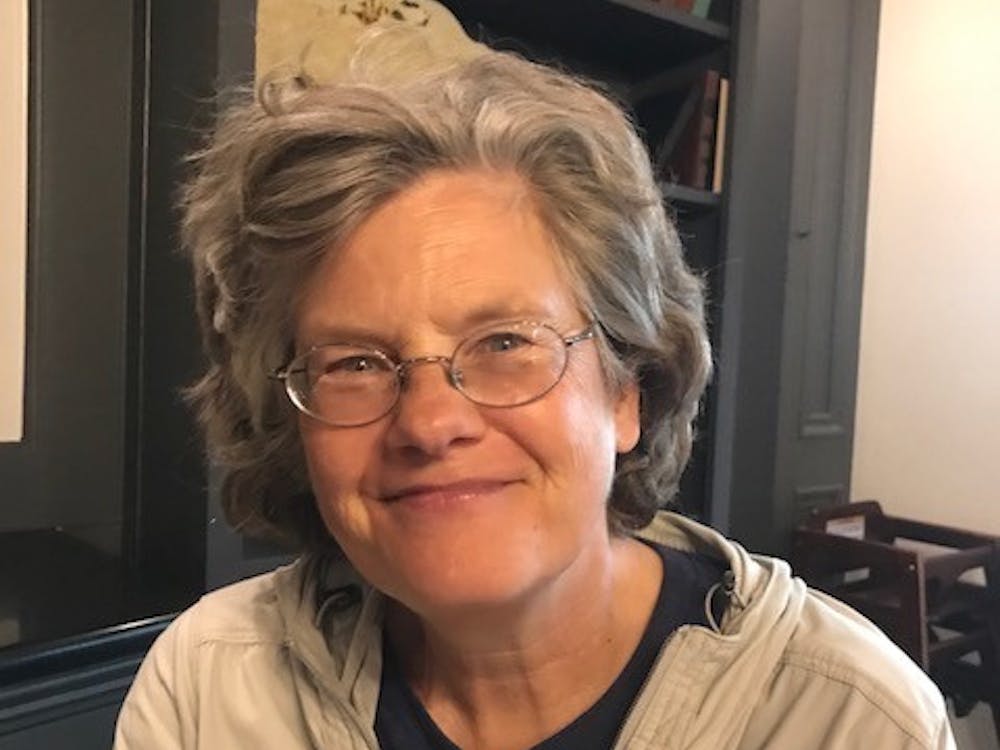Up two flights of stairs in the Engineering Building, behind a handful of heavy, gray doors and through an airlock, Miami University researchers are looking for a better way to regrow bones.
"If you have a defect in a bone, and if the bone defect is beyond a certain size, younger connective tissues forms, but it's not bone," said Paul James, an associate professor of biology and one of the lead researchers on the project. "You need a bridge."
The other project lead is Amy Yousefi, a professor of chemical, paper and biomedical engineering who has been working on the project since its inception in 2009. Together, the pair hopes to develop synthetic scaffolding that can be 3D-printed to fit large swaths of missing or traumatized bone. After printing, the scaffolding is seeded with cells to encourage bone regrowth.
This type of technology could offer major benefits to veterans and other trauma victims, reducing the need for painful surgical bone grafts.
The importance of the research hasn't gone unnoticed. The project is funded through 2019 by a grant from the National Institute of Health.
Yousefi and James aren't alone in their pursuit of bone repair solutions, even at Miami. An associate professor in the engineering department, Justin Saul, is studying the effects of keratin (the material that makes up your nails and hair) on bone regeneration.
However, the approach taken by Yousefi and James offers their scaffolding system qualities that they hope will help it stand out among other options.
"This is the first step to make our scaffold," said Songmi Koo, a second-year graduate student researching polymers for the project. "This is the most interesting thing for me, the 3D-printing."
To make the scaffold, the researchers use a bioplotter -- essentially a large 3D printer that can layer complex medical materials -- in addition to a system of solvents and solutions.
Combined, the processes create a scaffold that has "macro" channels, which are specialized to house blood vessels and transport nutrients, as well as "micro" holes less than a tenth of a millimeter wide that help fluids move between cells, said Yousefi and James.
Past the interior pores, the solvent-solution technique also carves out nanoscopic pockmarks on the surface area of the scaffold that help attract and retain biological cells to the synthetic scaffold.
"This is where Dr. Zhang comes in," said James, speaking about Jing Zhang, a Miami statistics professor assisting with the research. "We want to optimize the number and size of the pores while maintaining a certain thickness."
Enjoy what you're reading?
Signup for our newsletter
Broadly, the goal of the researchers is to find the right balance between mechanical factors, like the strength and resistance of the scaffold, and biological ones, like cell adhesion.
The projects' most recent acquisition is a new bioreactor, which recently arrived in the clean room behind the airlock on Jan. 29. The machine's primary task is to replicate the conditions of the human body for testing the scaffolding, imitating fluid pressure around a bone and the Ph of the body, among other factors.
"With the right kind of bioreactor, we can put stress on the bone structure," said Yousefi, adding that the right type of stress on a bone actually encourages bone growth.
To improve the fluid flow within the bioreactor, Yousefi and James brought on more researchers: four undergraduate design students with access to a RedHawk high-performance computing cluster.
"They do the simulations and we have some results," said Yousefi. "Eventually, we are optimizing the fluid velocity with the flow rate and hopefully in one month or two we are going to start with the commercial scaffolding."
Competing with the basic commercial scaffolding and bone graft techniques is perhaps the most important step for the project, as Yousefi and James hope to ultimately offer their own scaffold to the public.
"We are hoping that we can outperform the commercial scaffolding," said Yousefi. "Hopefully."




